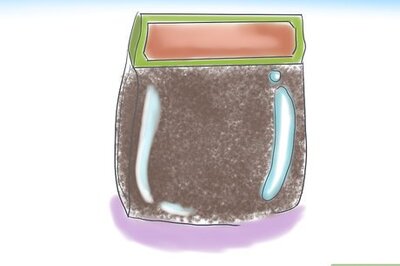
views
National Payments Corporation of India (NPCI) on Wednesday said there is no charge for the bank account to bank account-based UPI payments or normal UPI payments. However, interchange charges are only applicable for the prepaid payment instruments (PPI) merchant transactions and there is no charge to customers, NPCI clarified in a statement. Read more
NPCI has permitted the PPI wallets to be part of interoperable UPI ecosystem and levied 1.1 per cent charge on unified payment interface (UPI) transactions above Rs 2,000 while using PPI.
“The interchange charges introduced are only applicable for the PPI merchant transactions and there is no charge to customers, and it is further clarified that there are no charges for the bank account to bank account-based UPI payments (i.e. normal UPI payments),” it said.
With this addition to UPI, the customers will have the choice of using any bank account, RuPay Credit card and prepaid wallets on UPI-enabled apps, it said.
In recent times, it said, UPI has emerged as the preferred mode of digital payment by offering free, fast, secure and seamless experience.
Traditionally, it said, the most preferred method of UPI transactions is linking the bank account in any UPI-enabled app for making payments which contribute over 99.9 per cent of total UPI transactions.
These bank account-to-account transactions continue to remain free for customers and merchants.
What Does This Mean, Simplified
If the transaction value is Rs. 2000 or higher, UPI payments done using PPIs (digital wallets like PayTM wallet) will now incur a 1.1 percent cost, according to an India Today report. However, wallet transactions worth less than Rs. 2000 are exempt from this fee.
The fee will be charged to the retailer. This means that businesses can choose whether or not to pass on the additional price to customers. Normal UPI transactions, which are done straight from bank account to bank account, continue to be free.
How is UPI different from PPI?
According to a report by Times of India, a UPI transaction is a straight bank-to-bank transfer, whereas digital wallets operate as intermediaries between bank accounts.
UPI uses a virtual payment address and identity, whereas digital wallets employ a mobile phone number.
For non-KYC clients, the UPI transaction maximum limit is Rs 1 lakh , whereas wallet transactions are limited to Rs 10,000 per month. UPI transactions can occur between any two banks, whereas digital wallet transactions can happen between two accounts within the same digital wallet app.
UPI enables for future transactions, whereas digital wallets only allow for immediate transactions.
UPI is the most popular and widely utilised payment system in India, allowing users to immediately transfer money between bank accounts using their mobile phones. In contrast, PPIs are digital wallets that allow users to store money and make payments. Paytm, PhonePe, and Google Pay are among the PPIs available in India, says the report by India Today.
Interchange Fee?
The interchange fee for telecom, education, and utilities/post office is 0.7%, while the fee for supermarkets is 0.9% of the transaction amount. Insurance, government, mutual funds, and railways would face 1% levies, 0.5% for fuel, and 0.7 for agricultural, according to CNBC TV-18.
In the event of peer-to-peer (P2P) and peer-to-peer-merchant (P2PM) transactions, exchange will not be used. PPP issuers will be forced to pay a wallet-loading charge of 15 basis points (bps) to the remitter bank for transactions above 2,000.
With inputs from PTI
Read all the Latest Explainers here




















Comments
0 comment